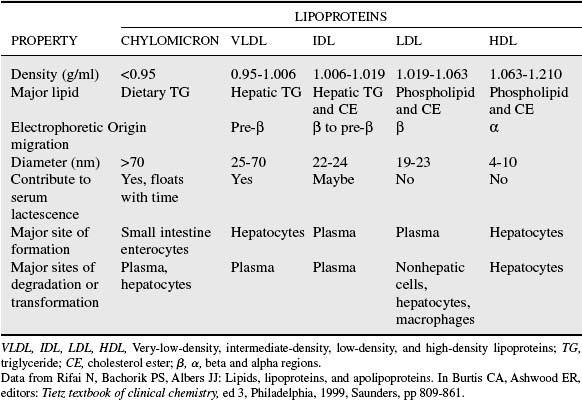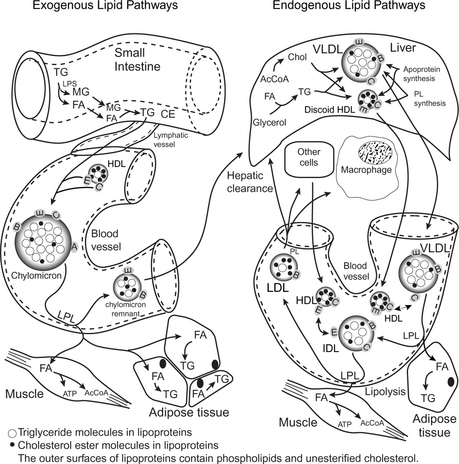33 TRIGLYCERIDES, CHOLESTEROL, AND OTHER LIPIDS
1 Define the following terms: lipid, lipoprotein, apolipoprotein, triglyceride, cholesterol, fatty acid, hyperlipemia, hyperlipidemia, hyperlipoproteinemia, and lipemia.
2 Which two lipid compounds in the plasma of domestic mammals are most commonly measured by clinical laboratory assays?
3 How are lipoproteins classified?
Lipoproteins are classified by either their electrophoretic mobility or by their density relative to water. Their electrophoretic migrations and their densities depend on their compositions. In the electrophoretic classification the large and poorly charged chylomicrons do not migrate from the application point (end of gamma region). However, the smaller lipoproteins with their external coating of charged protein and lipid molecules migrate into the alpha (α) and beta (β) regions, as designated by routine protein electrophoresis in which molecules are stained with a protein stain instead of a lipid stain. In the density classification, which uses the common lipoprotein names (e.g., VLDL, IDL), the lipoproteins are grouped by their relative density compared with water (Table 33-1).
5 Lactescence in lipemic blood samples is primarily caused by high concentrations of which lipoproteins?
6 How do clinical laboratory assays measure serum or plasma cholesterol and triglyceride concentrations?
7 What three major changes or alterations in physiologic processes produce hyperlipidemia?
Hyperlipidemia occurs when one or more of the following processes occur:
8 What are the different lipases and what are their actions?
The breakdown of lipids in the body involves the following lipases:
9 What major physiologic processes result in the formation and degradation of lipoproteins?
Figure 33-1 illustrates and describes the major metabolic pathways for endogenous and exogenous lipids.
Stay updated, free articles. Join our Telegram channel

Full access? Get Clinical Tree




